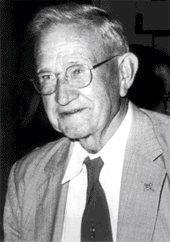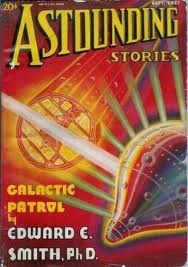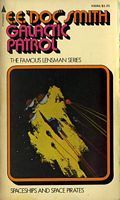Lawrence R. Spencer's Blog, page 184
March 8, 2021
POINT OF VIEW HAIKU
Republished by Blog Post Promoter
We live on a planet controlled by psychopaths. It may be wise to change our point of view in order to avoid the contagion of their insanity.
transcendent view above
peaceful contemplation state
serene clouds below
__________
Lawrence R. Spencer
2013
GO TELL IT LIKE IT IS
Republished by Blog Post Promoter
 “While shepherds kept their watching
“While shepherds kept their watching
Over silent flocks by night,
Behold throughout the heavens,
There shone a holy light:
Go, Tell It On The Mountain,
Over the hills and everywhere;
Go, Tell It On The Mountain
That Jesus Christ is born.”
from the Christian song, “Go Tell It On The Mountain”. “Go Tell It on the Mountain” is an African-American spiritual song, compiled by John Wesley Work, Jr., dating back to at least 1865, that has been sung and recorded by many gospel and secular performers. It is considered a Christmas carol because its original lyrics celebrate the Nativity of Jesus (Wikipedia.org)
I don’t care who you are. I don’t care what a bunch of superstitious sheep herders say. Birth is bloody and painful! If you are inhabiting a biological body on Earth, your mother sacrificed her body and her life to bear you and feed you with her tits (or a bottle) and work her ass off to support and clothe you until you were old enough to take care of yourself! The TRUTH is that this “religious holiday” should be a celebration and admiration of MOTHERS! In spite of ancient superstitions, and patriarchal propaganda, Jesus (if the guy ever really existed) inhabited a biological body that was produced by a women who fucked a man and got pregnant and gave birth to a stinking, screaming baby body, just like everyone else on this god-forsaken planet!
CREATING YOUR SELF
Republished by Blog Post Promoter
( See more Magical Paintings by the Spanish artist, Alex Alemany on his website — http://www.alexalemany.com )
QUOTE: George Bernard Shaw (26 July 1856 – 2 November 1950) was an Irish playwright and a co-founder of the London School of Economics. Although his first profitable writing was music and literary criticism, in which capacity he wrote many highly articulate pieces of journalism, his main talent was for drama, and he wrote more than 60 plays. He was also an essayist, novelist and short story writer. Nearly all his writings address prevailing social problems with a vein of comedy which makes their stark themes more palatable. Issues which engaged Shaw’s attention included education, marriage, religion, government, health care, and class privilege.
He was most angered by what he perceived as the exploitation of the working class. An ardent socialist, Shaw wrote many brochures and speeches for the Fabian Society. He became an accomplished orator in the furtherance of its causes, which included gaining equal rights for men and women, alleviating abuses of the working class, rescinding private ownership of productive land, and promoting healthy lifestyles. Shaw was noted for expressing his views in uncompromising language, whether on vegetarianism (branding his own pre-vegetarian self a “cannibal”), the development of the human race (his own brand of eugenics).
~ http://en.wikipedia.org/wiki/George_Bernard_Shaw
March 7, 2021
POLE DANCING CHAMPION
Republished by Blog Post Promoter
Unbelievably, amazingly awesome! Ball Room dancers, eat your heart out!
THE ORIGINAL STAR WARS
Republished by Blog Post Promoter
I recently re-read my favorite science fiction books, discovering that, like most prophetic literature, they must be studied carefully and repeatedly to perceive many subtle layers of understanding and insight embodied in the text of six books. In my opinion, the most revolutionary, groundbreaking and classic series of science fiction books ever published is The Lensman series. This series was written by Edward Elmer “Doc” Smith, PhD. All of the books in this profoundly important series are available in from Amazon.com (HERE) and the audiobook versions from Audible.com (HERE). If you are a fan of science fiction, high technology, or of spiritual phenomenon, these books are mandatory reference material.
 Edward Elmer Smith Ph.D. (also E. E. Smith, E. E. “Doc” Smith, Doc Smith, “Skylark” Smith, or—to his family—Ted) (May 2, 1890 – August 31, 1965) was an American food engineer (specializing in doughnut and pastry mixes) and early science fiction author, best known for the Lensman and Skylark series. He is sometimes called the father of space opera.
Edward Elmer Smith Ph.D. (also E. E. Smith, E. E. “Doc” Smith, Doc Smith, “Skylark” Smith, or—to his family—Ted) (May 2, 1890 – August 31, 1965) was an American food engineer (specializing in doughnut and pastry mixes) and early science fiction author, best known for the Lensman and Skylark series. He is sometimes called the father of space opera.
Another of my favorite writers is the iconic science fiction writer Robert A. Heinlein. He and Doc Smith were good friends. (Heinlein dedicated his 1958 novel Methuselah’s Children “To Edward E. Smith, Ph.D.”. Heinlein reported that E. E. Smith perhaps took his “unrealistic” heroes from life, citing as an example the extreme competence of the hero of Spacehounds of IPC. He reported that E. E. Smith was a large, blond, athletic, very intelligent, very gallant man, married to a remarkably beautiful, intelligent red-haired woman named MacDougal (thus perhaps the prototypes of ‘Kimball Kinnison’ and ‘Clarissa MacDougal’). In Heinlein’s essay, he reports that he began to suspect Smith might be a sort of “superman” when he asked Smith for help in purchasing a car. Smith tested the car by driving it on a back road at illegally high speeds with their heads pressed tightly against the roof columns to listen for chassis squeaks by bone conduction—a process apparently improvised on the spot.
In his non-series novels written after his professional retirement, Galaxy Primes, Subspace Explorers, and Subspace Encounter, E. E. Smith explores themes of telepathy and other mental abilities collectively called “psionics”, and of the conflict between libertarian and socialistic/communistic influences in the colonization of other planets.
Although the language, slang and cultural references are antiquated, I must continually remind myself that these books were written primarily during the 1930s! Long before atomic bombs became a reality, Doc Smith describes atomic and electronic weapons in detail. His technical conceptions and detailed descriptions of engines and spacecraft capable of interstellar, intergalactic, and hyper-spacial have no equal.
Doc Smith (an doughnut and cake mix engineer by trade in “real” life) conjures a fictionalized history of the human race (civilization) engendered and nurtured by a race of super-beings of infinite, incorporeal origins. The nemesis of Civilization are the equally intelligent and capable race of Edorians. A convergence of two galaxies co-mingled these antagonists onto an evolutionary battleground — perpetual warfare lasting billions of years. The parallels and contrasting behavior characteristics of the “good guys” vs “bad guys” reveal the essence of who we are, and could become on this planet.
George Lukas, creator of the Star Wars films relates in his autobiography that his films were inspired by the Lensman books. However, even these unprecedented films reveal only a dim shadow cast by the brilliant light of science fiction literature created by Doc Smith. The characters, conflicts, technology he describes are so hauntingly “real” that one wonders whether Doc Smith wrote his stories as fantasies, or from his own “memory” as in infinitely ancient spiritual being, drawing from his the primordial past of “A long time ago, in a galaxy far, far away…“!
Originally, the Lensman Series was published in pulp fiction magazines. The complete series in sequence and their original publication dates are:
Triplanetary (1948. Originally published in four parts, January–April 1934, in Amazing Stories ) First Lensman (1950, Fantasy Press) Galactic Patrol (1950. Originally published in six parts, September 1937 – February 1938, in Astounding Stories ) Gray Lensman (1951. Originally published in four parts, October 1939 – January 1940, Astounding Stories ) Second Stage Lensmen (1953. Originally published in four parts, November 1941 – February 1942, Astounding Stories ) Children of the Lens (1954. Originally published in four parts, November 1947 – February 1948, Astounding Stories )And, a sequel, The Vortex Blaster (1960. Published with the title Masters of the Vortex in 1968)Originally, the series consisted of the final four novels published between 1937 and 1948. Smith rewrote his 1934 story Triplanetary, originally published in Amazing Stories, to fit in with the Lensman series. First Lensman was written in 1950 to act as a link between Triplanetary and Galactic Patrol and finally, in the years up to 1954, Smith revised the rest of the series to remove inconsistencies between the original Lensman chronology and Triplanetary.
Smith’s novels are generally considered to be the classic space operas, and he is sometimes called the “first nova” of twentieth century science fiction. Smith expressed a preference for inventing fictional technologies that were not strictly impossible (so far as the science of the day was aware) but highly unlikely: “the more highly improbable a concept is—short of being contrary to mathematics whose fundamental operations involve no neglect of infinitesimals—the better I like it” was his phrase.
For more detailed information about The Lensman Series and other books by EE Smith, and about this truly amazing man, read http://en.wikipedia.org/wiki/E._E._Smith
ORDER OF OMEGA GRASSHOPPER HUNT
Republished by Blog Post Promoter

Lester Scruggs shares his trophy photo from the Annual Order of Omega Time Travel Cult Grasshopper Hunt on the Amazon Plateau in 284,000 B.C.E..
March 6, 2021
CERES ASTEROID PHOTOS: HAS NASA DISCOVERED A DOMAIN BASE?
Republished by Blog Post Promoter
“The asteroid belt near Earth is a very small, but important location for The Domain in this part of space. Actually, some of the objects in our solar system are very valuable for use as low-gravity “space stations”. They are interested primarily in the low gravity satellites in this solar system which consists mainly of the side of the moon facing away from Earth and the asteroid belt, which was a planet that was destroyed billions of years ago, and to a lesser degree, Mars and Venus. Domed structures synthesized from gypsum or underground bases covered by electromagnetic force screens are easily constructed to house the Domain forces.” — Quoted from 1947 Roswell UFO crash pilot interview transcripts published in the book Alien Interview Ceres is the largest object in the asteroid belt, which lies between the orbits of Mars and Jupiter. It is composed of rock and ice, is 950 kilometers (590 miles) in diameter, and comprises approximately one third of the mass of the asteroid belt.This animation shows a sequence of images taken by NASA’s Dawn spacecraft on May 4, 2015, from a distance of 8,400 miles (13,600 kilometers), in its RC3 mapping orbit. The image resolution is 0.8 mile (1.3 kilometers) per pixel. In this closest-yet view, the brightest spots within a crater in the northern hemisphere are revealed to be composed of many smaller spots. However, their exact nature remains unknown. (Wikipedia.org)
Ceres is the largest object in the asteroid belt, which lies between the orbits of Mars and Jupiter. It is composed of rock and ice, is 950 kilometers (590 miles) in diameter, and comprises approximately one third of the mass of the asteroid belt.This animation shows a sequence of images taken by NASA’s Dawn spacecraft on May 4, 2015, from a distance of 8,400 miles (13,600 kilometers), in its RC3 mapping orbit. The image resolution is 0.8 mile (1.3 kilometers) per pixel. In this closest-yet view, the brightest spots within a crater in the northern hemisphere are revealed to be composed of many smaller spots. However, their exact nature remains unknown. (Wikipedia.org)
Dawn’s mission is managed by JPL for NASA’s Science Mission Directorate in Washington. Dawn is a project of the directorate’s Discovery Program, managed by NASA’s Marshall Space Flight Center in Huntsville, Alabama. UCLA is responsible for overall Dawn mission science. Orbital ATK, Inc., in Dulles, Virginia, designed and built the spacecraft. The German Aerospace Center, the Max Planck Institute for Solar System Research, the Italian Space Agency and the Italian National Astrophysical Institute are international partners on the mission team. For a complete list of acknowledgements, visit http://dawn.jpl.nasa.gov/mission.
 Ceres photographed on May 3 and 4 by NASA’s Dawn spacecraft show multiple white spots inside the 57-mile-wide crater located in the asteroid’s northern hemisphere. Credit: NASA/JPL-Caltech/UCLA/MPS/DLR/IDA / montage by Tom Ruen
Ceres photographed on May 3 and 4 by NASA’s Dawn spacecraft show multiple white spots inside the 57-mile-wide crater located in the asteroid’s northern hemisphere. Credit: NASA/JPL-Caltech/UCLA/MPS/DLR/IDA / montage by Tom Ruen
March 5, 2021
1001 Things To Do While You’re Dead (#359 and #360)
Republished by Blog Post Promoter
This may be far more complicated that it sounds as there are hundreds, if not thousands, of definitions of “heaven” among the current citizens of Earth, not to mention the religions and mythology of extinct cultures.
Confusion, conflict and contradictions notwithstanding, let us assume that if you have managed the make it through your ordeal so far this may be your next move. In case there really is a “heaven”, go ahead and go there. You can always come back later if you don’t like it. (By the way, if you find out where heaven is, try to send us a sign.)
However, if it turns out that heaven is just a state of mind, don’t bother…we’ll find out when we die. Of course, by then, it will be too late. Either way, it won’t be your fault or your problem. We’re all responsible for our own Destiny…or not.
# 360 — GO TO HELL.
If you really do go to heaven it might turn out to be really boring.
Who could actually stand to live in a place that is eternally “nice”. Really…. Besides, chances are pretty good that you did enough “bad” stuff during your life on Earth that “they” won’t let you “in” to heaven anyway.
Besides, there may not actually be any heaven. So, if this turns of to be the situation, then what do you have to lose? However, if “hell” isn’t a “place” either, then you may have to go searching for it. If the only place you can find is Earth you have arrived. Welcome back, asshole!
______________________________
— Excerpt from the book “1001 THINGS TO DO WHILE YOU’RE DEAD”, by Lawrence R. Spencer
FOR MORE INFORMATION ABOUT THIS BOOK and the author, please visit this site: http://booktour.com/author/33423










